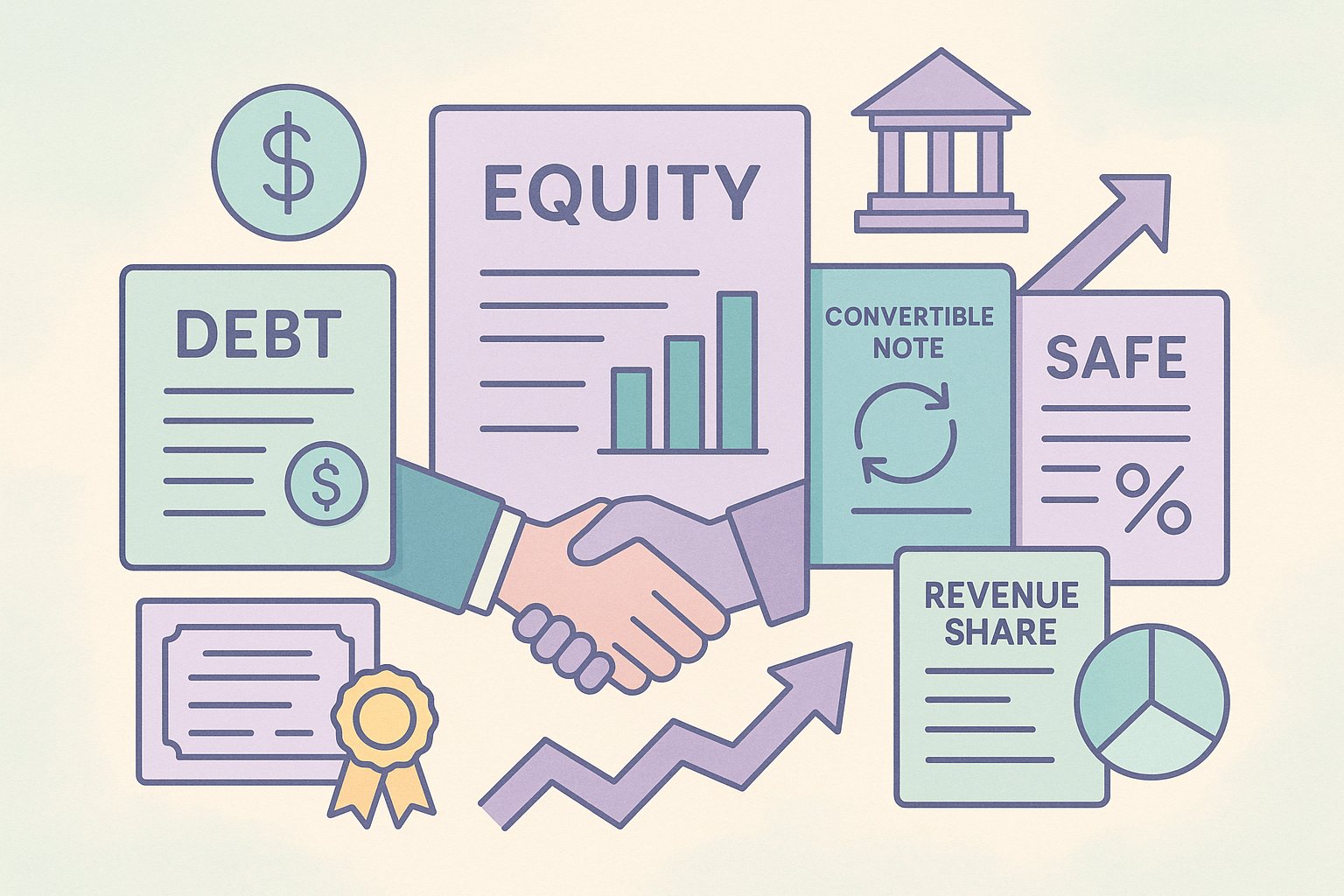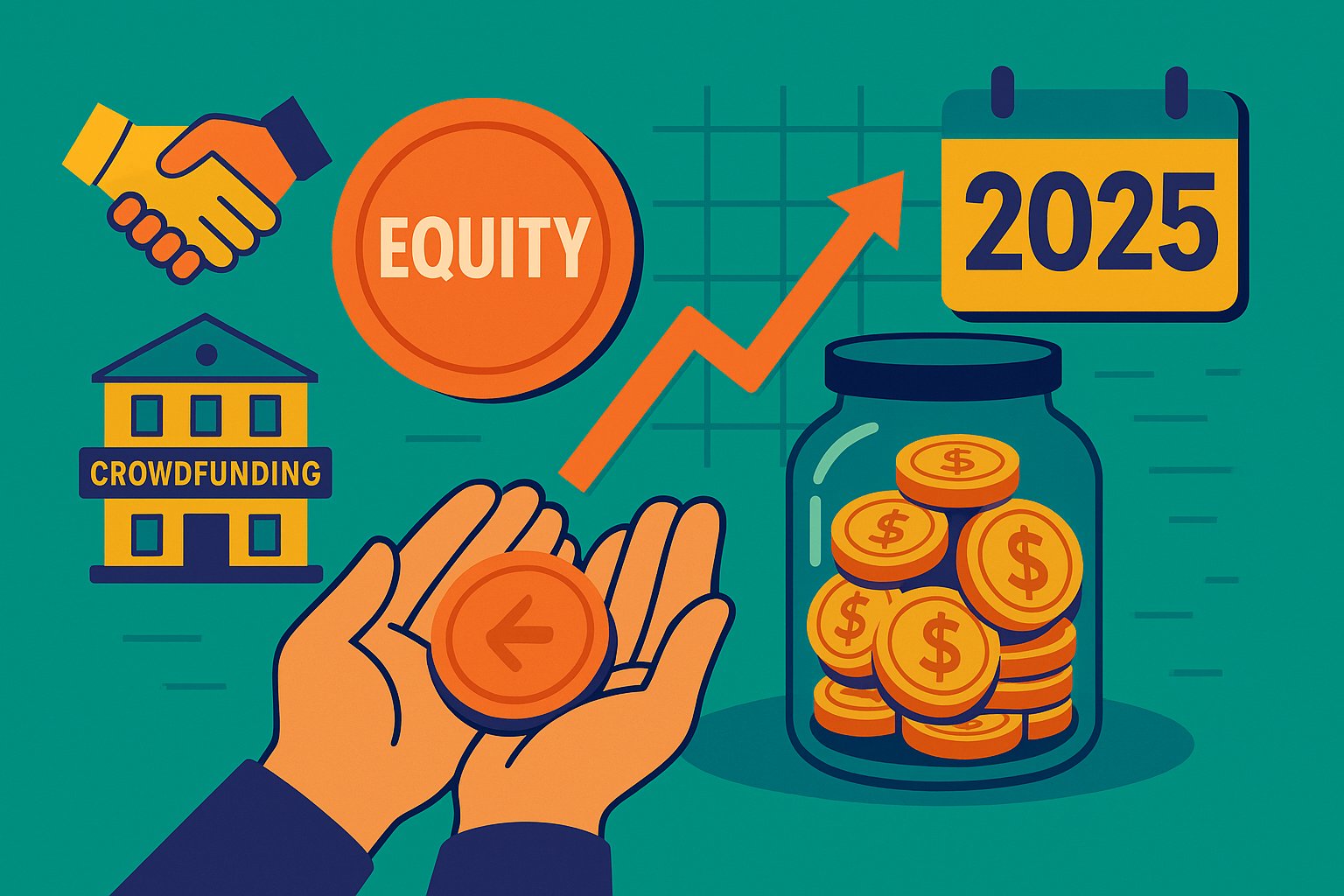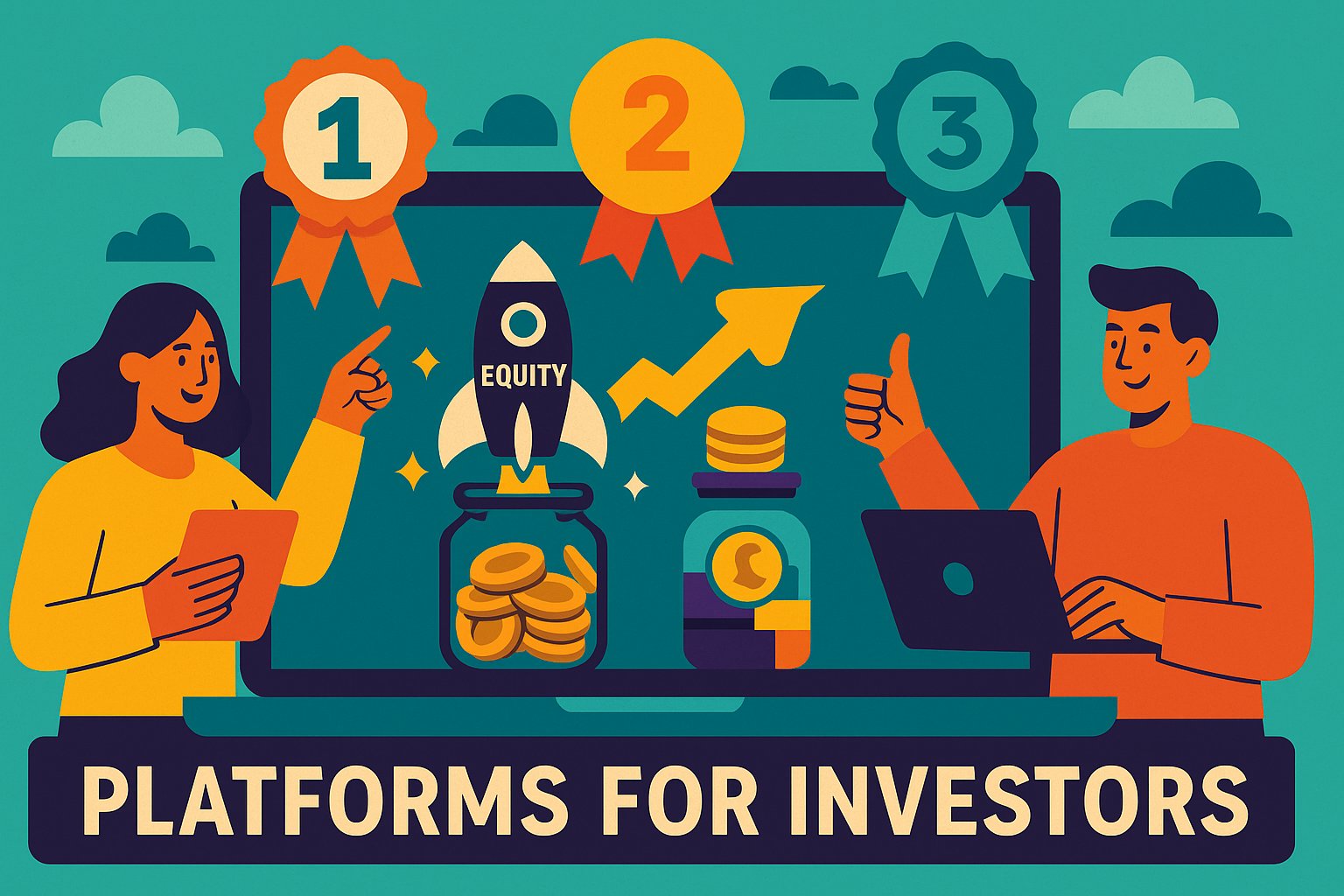Exploring the Spectrum of Crowdfunded Securities
Equity crowdfunding has transformed the way entrepreneurs raise capital and the way individual investors access early-stage opportunities. No longer confined to wealthy venture capitalists, today’s equity crowdfunding platforms welcome a diverse array of backers ready to support the next generation of innovative companies. But what exactly can you buy when you log in to these crowdfunding equity sites? Far from a one-size-fits-all proposition, the menu of available securities spans traditional stock offerings, debt instruments that convert to equity, revenue-sharing agreements, and even tokenized assets on blockchain-based platforms. Each type carries its own risk profile, return potential, and legal nuances, making the choice of security as critical as selecting the right startup. In this comprehensive guide, we’ll journey through the rich landscape of crowdfunding securities—demystifying share classes, convertible notes, SAFEs, revenue participation arrangements, tokenized equity, and more—so you can invest with clarity, confidence, and strategic vision.
Understanding the Equity Crowdfunding Landscape
Equity crowdfunding emerged from legislative reforms designed to democratize capital formation, most notably the U.S. JOBS Act of 2012. By establishing specific crowdfunding exemptions, regulators enabled startups to solicit investments from both accredited and non-accredited investors through registered platforms. Unlike rewards-based crowdfunding, where backers receive products or perks, equity crowdfunding offers financial stakes in issuing companies. As platforms proliferate—each with its own registration requirements, due diligence standards, and deal flow focus—the variety of investment vehicles has expanded accordingly. Some sites emphasize traditional stock offerings, while others specialize in debt securities that convert to equity, or alternative financing structures aligned with revenue performance. International platforms may even offer tokenized securities via blockchain, introducing programmable features and secondary-market liquidity. Familiarizing yourself with this diversity is the first step toward crafting a crowdfunding portfolio that aligns with your risk tolerance, investment horizon, and desired level of involvement.
Common Equity Shares: Building Stakes That Resemble Public Markets
The most intuitive entry point for many crowdfunding investors is the purchase of traditional equity shares—either common stock or preferred stock. Common stock grants you an ownership interest in the company and typically includes voting rights on key corporate matters, such as board elections or major strategic decisions. However, common shareholders sit last in line during a liquidation event, bearing the highest risk if the company fails. To mitigate this, many startups issue preferred shares in crowdfunding rounds. Preferred stockholders enjoy priority over common shareholders when distributions are made, and may receive dividend rights or anti-dilution protections that preserve their ownership percentage through subsequent funding rounds. While preferred stock can come with complex terms—liquidation preferences, conversion ratios, and redemption rights—it remains one of the most straightforward mechanisms for participating in a company’s growth. Whether you choose common or preferred, equity shares offer the purest form of ownership, aligning your interests with the company’s long-term success.
Convertible Notes: Bridging Debt and Equity for Early-Stage Investing
For companies still refining their valuation, convertible notes present a flexible instrument that starts as debt and automatically converts into equity at a future financing round. When you invest via a convertible note, the company agrees to repay your investment with interest unless and until a priced equity round triggers conversion. At that point, your note balance converts at a predetermined discount to the new round’s share price, rewarding you for your early support. Some notes also include valuation caps, which set an upper bound on your conversion price and can yield significant upside if the company’s valuation accelerates. From the issuer’s perspective, convertible notes provide quick access to capital without the need to negotiate a valuation upfront. For investors, they offer downside protection—as noteholders, you stand ahead of equity in the repayment hierarchy—combined with the potential for equity upside once the startup gains traction. Understanding the nuances of interest rates, discount rates, and cap structures is vital when evaluating these debt-to-equity hybrid securities.
SAFEs: Simplified Agreements for Future Equity
In 2013, Y Combinator introduced the SAFE (Simple Agreement for Future Equity) to streamline early-stage fundraising. Like convertible notes, SAFEs convert into equity at a subsequent financing event, but they dispense with the debt component—meaning there is no interest accrual or set maturity date demanding repayment. Instead, SAFEs hinge on triggers like priced equity rounds or change-of-control events to convert into shares at a discount or based on a valuation cap. Their simplicity can accelerate fundraising by minimizing lawyer fees and negotiation time. From an investor’s standpoint, SAFEs offer clarity: you know exactly when and how your investment becomes equity. Yet this very simplicity requires careful attention to conversion terms. If a startup delays its next financing or fails to secure a triggering event, your SAFE may remain unconverted indefinitely, with no legal claim for repayment. Weighing the relative merits of SAFEs versus convertible notes involves balancing the desire for streamlined terms against the protective features inherent in debt instruments.
Revenue Sharing Agreements: Linking Returns to Sales Performance
Some crowdfunding platforms broaden the investment menu by offering revenue sharing agreements—or revenue participation notes—that tie investor returns directly to company revenues. Under this structure, the issuing startup agrees to pay a fixed percentage of its top-line sales to investors until a predetermined total return multiple or cap is reached. Unlike equity, revenue shares do not confer ownership or voting rights; instead, they function as royalty-style payments that fluctuate with business performance. For investors seeking shorter-term cash flows and a direct link between company success and returns, these securities can be attractive. They also sidestep valuation debates, as returns are based on revenue metrics rather than abstract share prices. However, revenue shares carry distinct risks: if sales underperform, return timelines can extend considerably, and if the company never reaches profitability, investors may never recoup their principal. As always, thorough analysis of sales projections, product-market fit, and competitive dynamics is essential before committing capital to revenue-based instruments.
Tokenized Securities: The Blockchain Frontier
Emerging crowdfunding platforms are experimenting with tokenized securities—digital representations of ownership or debt rights encoded on a blockchain. These tokens can embody equity shares, convertible instruments, or revenue participation agreements, leveraging smart contracts to automate dividend distributions, voting processes, and transfer restrictions. For investors, tokenization promises unprecedented transparency: transaction histories and token balances are publicly verifiable, and fractional ownership becomes seamless. Moreover, blockchain networks can facilitate secondary-market trading, improving liquidity for securities that traditionally remain illiquid for years. Yet tokenized offerings must navigate uncharted regulatory territory. Platforms must ensure compliance with securities laws, often by restricting token transfers to accredited investors or by implementing on-chain identity verification. Security risks—smart contract vulnerabilities, custody challenges, and exchange hacks—also warrant caution. As the regulatory environment matures and infrastructure stabilizes, tokenized securities may redefine how crowdfunding investors buy, hold, and trade private company stakes.
Sidecar Funds and Pro Rata Rights: Enhancing Diversification and Follow-On Access
Beyond direct investments, some crowdfunding platforms create pooled vehicles or sidecar funds that aggregate investor capital into a diversified portfolio of startup securities. These funds handle deal sourcing, due diligence, and negotiation centrally, allowing individual backers to participate indirectly in a broader basket of companies. By spreading risk across multiple issuers, sidecar funds offer a buffer against single-company failures, while still capturing the potential upside of early-stage ventures. Additionally, investors who acquire certain types of securities—like convertible notes or SAFEs—may receive pro rata rights, entitling them to participatory stakes in future funding rounds. Exercising these rights can preserve or increase ownership percentages, preventing dilution as startups scale. While pooled funds and pro rata provisions introduce management fees or require larger minimum investments, they represent strategic mechanisms to bolster diversification and maintain influence in promising companies over time.
Preferred Versus Common: Navigating Share Class Nuances
Within direct equity offerings, understanding the differences between preferred and common shares is critical. Common stockholders enjoy voting rights—granting a voice in corporate governance—but face the highest risk in liquidation scenarios, receiving proceeds only after debt holders and preferred shareholders. Preferred stock, conversely, entitles investors to priority distributions and often includes additional protections such as dividend preferences or anti-dilution clauses. These features can materially affect your risk/return profile: a liquidation preference might ensure you recoup your investment before common shareholders, while anti-dilution rights guard against ownership erosion in down rounds. Some crowdfunding deals layer complexity by offering participating preferred shares, which combine fixed preference payments with the ability to share in residual profits alongside common shareholders. When evaluating equity stakes on crowdfunding platforms, scrutinizing share class terms and comparing the rights, preferences, and potential trade-offs of each offering empowers you to make informed decisions aligned with your investment objectives.
Regulatory Framework: Ensuring Transparency and Investor Protection
The kaleidoscope of securities available on equity crowdfunding sites exists within a carefully crafted regulatory framework designed to protect investors and maintain market integrity. In the United States, Regulation Crowdfunding mandates that issuers provide comprehensive disclosures—including audited financial statements, risk factors, and use-of-proceeds breakdowns—through SEC-registered intermediaries. Similar regimes in the United Kingdom, Canada, and European Union impose their own reporting obligations and investor limits, particularly for non-accredited participants. Platforms must verify investor eligibility, monitor offering caps, and enforce resale restrictions that guard against pump-and-dump schemes. These safeguards strike a balance between facilitating capital formation for innovative companies and shielding individual investors from costly mistakes. For you as an investor, choosing well-established, compliant platforms is paramount; reputable sites not only vet issuers rigorously but also guide you through the nuances of each security type, ensuring clarity around conversion mechanics, payout schedules, and exit pathways.
Comparing Risk Profiles: Matching Securities to Your Goals
Selecting the right type of crowdfunding security hinges on aligning each instrument’s risk-return characteristics with your financial goals and temperament. Direct equity shares, especially common stock, offer maximum upside potential but also carry the steepest downside in failure scenarios. Convertible notes provide a cushion of debt seniority and locked-in conversion terms, while SAFEs simplify the process at the cost of repayment guarantees. Revenue sharing agreements deliver revenue-linked cash flows but may prolong return timelines if sales lag. Tokenized securities promise liquidity and transparency but introduce technical and regulatory uncertainties. Sidecar funds and pro rata rights can smooth diversification and enable ongoing participation but may demand larger commitments and incur fees. By articulating your desired balance between return acceleration, capital preservation, liquidity needs, and complexity tolerance, you can navigate the crowded field of available securities and construct a crowdfunding portfolio tailored to your unique profile.
Practical Steps: Evaluating and Acquiring Crowdfunded Securities
Embarking on an investment in crowdfunding securities begins with thorough research. Start by exploring multiple platforms to gauge the breadth of offerings and minimum investment requirements. Review each issuer’s pitch materials—financial models, market analyses, and management bios—to assess credibility and growth prospects. Pay close attention to the specific terms of each security: key clauses in convertible note documents, valuation cap calculations, SAFE conversion scenarios, and revenue share caps. When considering tokenized offerings, investigate the underlying smart contract code, custody arrangements, and secondary-market policies. For pooled vehicles or sidecar funds, examine fund track records, fee structures, and governance procedures. Finally, leverage platform-provided educational resources, attend issuer webinars, and engage with community forums to deepen your understanding. Once you’ve identified attractive opportunities, complete the required accreditation or suitability checks, sign the subscription agreements, and transfer funds securely through the platform’s escrow mechanisms.
Managing Your Crowdfunding Portfolio: Monitoring and Exits
After acquiring crowdfunding securities, active portfolio management ensures you stay informed and prepared for liquidity events. Most platforms provide regular updates from issuers—quarterly financial summaries, milestone announcements, and market commentary—that keep you apprised of progress. For convertible notes and SAFEs, tracking the timelines and triggers for conversion events helps you anticipate equity issuance and subsequent valuation impacts. When revenue sharing agreements reach their cap or predefined multiple, platforms typically distribute proceeds directly to your account. Tokenized securities may offer secondary-market trading windows; monitoring order books and properly timing buy-and-sell orders can optimize returns. In cases where secondary sales are restricted or infrequent, prepare for liquidity via M&A events, IPOs, or structured buybacks. Maintaining an overview of your crowdfunding portfolio alongside public market holdings, bonds, and alternative assets ensures that your overall asset allocation remains aligned with evolving market conditions and personal objectives.
Charting a Course Through Crowdfunding Securities
Equity crowdfunding platforms have unlocked a vibrant array of securities, from straightforward equity shares to innovative tokenized instruments, each offering unique pathways to participate in entrepreneurial success. By understanding the legal structures, economic incentives, and risk profiles of common stock, preferred stock, convertible notes, SAFEs, revenue sharing agreements, tokenized offerings, and pooled sidecar vehicles, you position yourself to make strategic decisions that align with your financial goals. Navigating this landscape demands rigorous due diligence, a clear assessment of your tolerance for complexity and illiquidity, and a willingness to engage actively in post-investment monitoring. As crowdfunding ecosystems continue to evolve—driven by regulatory refinements, technological advances, and new issuance models—the opportunities for individual investors will only deepen. Embrace this dynamic frontier with curiosity and discipline, and you’ll unlock avenues of growth and diversification that transcend the limitations of traditional markets.




